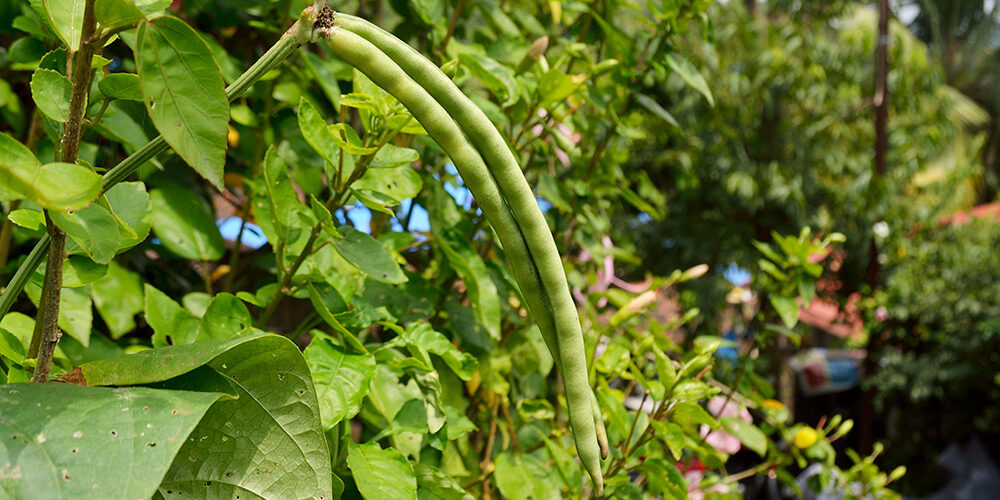Growing Pole Beans

Pole beans are simply a vining cultivar of edible beans. One reason to grow a climbing variety of Phaseolus vulgaris is for its looks: Pole beans can cover a trellis with delicate green vines.
Pole beans also provide shade from summer’s heat to other edibles and flowers. Phaseolus vulgaris cultivars can produce yellow, purple, and green pods. (Dozens of heirloom varieties provide an array of options for every climate and culinary need.)
They are simply a vining cultivar of edible beans. Both bush and pole beans have several options of beans and flowers to choose from—there’s yellow, purple, and green pods. Dozens of heirloom varieties provide an array of option for every climate and culinary need.
Both bush and pole bean plants produce “green beans,” and dried bean varieties come in bush or pole varieties as well.
They are a perfect addition to summer gardens, as they provide shade and late-blooming flowers alike. Grow the in different places every season to spread the nitrogen around your garden, and try pairing with cucumbers or tomatoes to get double duty from trellises. Avoid planting near alliums.
Planting
- Soak beans in rhizobium bacterium before planting to help plants fix nitrogen and boost yields. (Most major seed companies sell the inoculant.)
- Pole beans attract pollinators.
- Provide shade in sunny gardens.
Care
- Pole beans thrive in full sun; water an inch per week, especially when flowering and fruiting.
- Avoid spraying the foliage, and mulch them when they are 5-6 inches high to provide even moisture.
- Plant in late spring to early summer. Beans count as a summer crop–they grow best between 70 and 80 degrees, in soil and air temperatures.
Green beans deliver a hearty dose of protein; vitamins A, K, and C; manganese; fiber; magnesium, and potassium, to name just a few. Plant in your garden a week or two after the last frost, and protect if temperatures happen to drop again–pole bean plants will suffer if frosted. Amend your soil with compost and sow beans in the most well-drained area of your yard–they hate getting their feet wet.
Website: www.gardenista.com